Kelly Jensen's Blog, page 127
November 27, 2013
Links of Note: Thanksgiving Edition
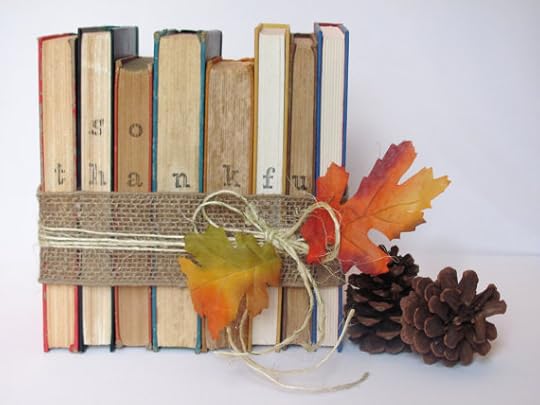 via Book Riot's 7 DIY Bookish Thanksgiving Decor
via Book Riot's 7 DIY Bookish Thanksgiving DecorUsually we post Links of Note every other Saturday or so, but Kimberly and I are both taking a long holiday weekend and thought instead of not posting at all today or tomorrow, a link round up would be worth saving for now. That way there's a long weekend's worth of reading around the bookish web to savor.
If we've missed something or should know about other recent good reading, let us know in the comments.
Over at Flavorwire, there's an interesting roundup of 50 books that defined the past five years in literature. These sorts of lists don't always catch my eye nor do I stop and think about them a whole lot, but this one came to my attention because Becky over at RA for All talked about why those of us who do reader's advisory or work with readers should care about this kind of list. She makes some really excellent points about making sure we don't overlook them or undervalue them just because they're no longer the brightest or shiniest.The Nation has a piece about the State of Literature. More specifically, it talks about reviews, about book covers, marketing, and how all of those things are impacted (or not) by gender and preconceptions of what a book is or is not. There's some really interesting talk in there about "new adult," as well, and the primary focus is about readership, which is what made it stand out to me. Somewhat related to the link above is a piece by Sarah Rees Brennan over at The Toast. She talks about sexism and the tricky business of being a woman and self-promoting.
Here's a fun one: The University of Illinois has archived online a bunch of the American Library Association's old promotional reading posters. Enjoy.
In Australia, a look at gender bias in children's literature. I am so glad this conversation is happening, continues to happen, and it keeps popping up all over the place in different variations. Single-handedly taking down the wealth of "oh noes, YA fiction is bad/corrupting/the worst" articles over the past couple of weeks is Foz Meadows. The bingo card is spot on, but the piece itself is more than worth the read as well. I can't track down the original source nor a place where there's a time line or link for pre-ordering, but soon you'll be able to buy the original four Nancy Drew books with entirely new (and gorgeous) covers. I think those redone covers are better than the new covers for Judy Blume's Forever and Are You There God? (I'm resisting all urges to make a "Period" joke here).I feel like everyone has read this piece already, but in the event you haven't, you should: Matt de la Pena talks about the tough kid and how sometimes it's the tough kid who is writing and seeking stories that reflect his or her reality. This one will get your eyes a little bit wet. A panel of literary agents discuss the diversity gap in children's publishing.
Over at Book Riot, I've written a few pieces in the last couple of weeks:
First, take a literary tour of Austin, Texas. You'll get to check out a ton of book stores, a few bookish spaces, and top it off with a literary mocha. Let's talk about the girl myth in YA fiction (and beyond). I wanted a way to talk about gender, and more specifically, about the myths surrounding what it does or doesn't mean to be a girl in YA fiction and why readers react the way they do when a girl acts or reacts in a certain way. Five fun parody videos of The Hunger Games and Catching Fire.
For those of you in the states celebrating the holiday this weekend, enjoy. For those of you who aren't, enjoy the rest of your work week and weekend, and we'll catch you all on Monday.







 Related StoriesLinks of Note: November 2, 2013Links of Note: October 5, 2013Links of Note: 9/21/13
Related StoriesLinks of Note: November 2, 2013Links of Note: October 5, 2013Links of Note: 9/21/13
Published on November 27, 2013 22:00
November 26, 2013
The 100 by Kass Morgan
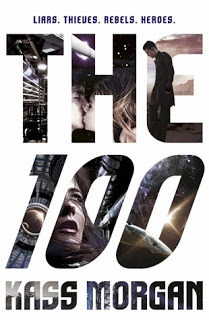 This book has gotten a bad rap on Goodreads, and I don't think it's deserved. The premise is killer. The writing is competent and flows nicely. The plot is fast and the characters are full of secrets. I really liked it - it's sci fi candy and I gobbled it right up.
This book has gotten a bad rap on Goodreads, and I don't think it's deserved. The premise is killer. The writing is competent and flows nicely. The plot is fast and the characters are full of secrets. I really liked it - it's sci fi candy and I gobbled it right up.The 100 refers to a group of people - juvenile delinquents who have been sent to re-colonize an irradiated Earth. Humanity has been living on space stations for generations, ever since the Earth became uninhabitable. But their resources are dwindling, and the adult scientists need to know if Earth is truly ready for habitation again. The teens will be the test subjects.
"Juvenile delinquent" in this future world is a fuzzy term. Crime is punished very severely, and almost anything is a crime. Adults who commit crimes are usually executed immediately. Minors are kept in "Confinement" until they turn 18, and are then given a retrial. Except the retrials are mostly shams and the teens are usually then executed as well. So for the teens who know what's likely coming, they look at the trip to Earth as a reprieve from death.
We get the story from four different third-person perspectives - two girls, two boys. They range in age from 17 to 20 (or thereabouts). They're Confined and/or sent to Earth for various reasons, though one of our POVs actually stays behind on one of the space stations, giving us more insight into that environment and the Earth experiment from the adults' perspective. Each of the characters has a secret (some have more than one); some secrets are easier to guess than others. The secrets are revealed in flashbacks, which I normally loathe, but they work well here - they're short and full of action, just like the present-day sections.
What irritates a lot of the reviewers is something that happens very near the end. We realize something one of the main characters did, and it's monumentally stupid. Not just "I can't believe I did that, that was so stupid" stupid. I mean that it really strains credulity. Breaks it, even. It certainly broke a lot of other readers. It didn't ruin it for me, though. I gave it a bit of a side-eye, sure. But I figured I was so far down the rabbit hole of believability, this one further step wasn't going to ruin my enjoyment. And it's followed very closely by another revelation that I found quite believable and sets the book up nicely for a sequel, which I will certainly be reading.
So, world-building. There's not much of it. If you want a lot of world-building that's creative and makes sense and actually uses science that maybe, possibly could exist in the future, look elsewhere. This is not your book. If you have a very, very healthy ability to suspend your disbelief and prefer to digest your sci-fi at a breakneck pace, you might consider giving this a shot.
This is an Alloy (book packager) title, and it feels like it. It bears a lot in common with a few other packaged titles I've read - short chapters, multiple characters (often multiple POVs), lots of secrets that are teased out over time, an emphasis on plot, a concept that can be described in a snappy sentence or two. What surprised me is that the author essentially acknowledges that it's a packaged title in the Acknowledgments (see what I did there?), at least in the arc version. She credits the idea for the story to someone else in the first sentence, and thanks several people, mentioning Alloy specifically, later on. As someone who looks for these sorts of things, this obviously caught my eye. I wonder how many teens 1. read the Acknowledgments, and 2. would care one way or another.
The CW has picked up this as a midseason premiere and I'm excited to have a look. I hope it's as fun as the book.
Review copy picked up at Kidlitcon.







 Related StoriesAwakening by Karen SandlerInk Is Thicker Than Water by Amy SpaldingWhat I'm Reading Now
Related StoriesAwakening by Karen SandlerInk Is Thicker Than Water by Amy SpaldingWhat I'm Reading Now
Published on November 26, 2013 22:00
November 25, 2013
Ink Is Thicker Than Water by Amy Spalding
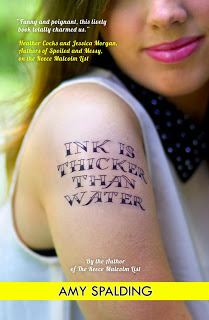 Kellie Brooks thinks she knows herself, thinks she knows her best friends, and thinks she knows her family. But everything she thinks she knows begins to fall apart when her adopted sister Sara turns 18 and has the chance to meet her birth mother. And everything changes again when Kellie joins the school newspaper and realizes Adalaide, the girl she'd always thought was a dork, is actually not that dorky after all. And it changes further when her best friend Kaitlyn begins to drift away.
Kellie Brooks thinks she knows herself, thinks she knows her best friends, and thinks she knows her family. But everything she thinks she knows begins to fall apart when her adopted sister Sara turns 18 and has the chance to meet her birth mother. And everything changes again when Kellie joins the school newspaper and realizes Adalaide, the girl she'd always thought was a dork, is actually not that dorky after all. And it changes further when her best friend Kaitlyn begins to drift away.And Oliver, the brother of her sister's boyfriend Dexter, only complicates Kellie's life even further. After their awkward encounter last May, wherein he tried to get Kellie to have sex and she backed out, she thought his presence in her life was gone forever. But now it seems like he's interested again.
Amy Spalding's Ink Is Thicker Than Water is an excellent example of a true YA novel. It's coming-of-age, but it's coming-of-age through a perspective that's quite minute and not world-shattering. What Kellie is going through and experiencing is entirely within the contours of her own life and her own experiences. She's navigating a tricky situation in her family life, a change in what she thought were forever friendships, and an opportunity to pursue a romance with a boy who she thought would never again be a part of her life. Despite the fact none of the things that happen impact the greater world, they each play a huge part in impacting Kellie's own world. And each of the things she encounters leads to her coming to better understand her role in her own life and in the lives of those around her -- as well as her role in the greater world.
Family is the biggest aspect of this story, and Spalding isn't afraid to look at a very complicated family dynamic that isn't interesting because of its complexity and challenges, but rather, is interesting because it does work. Sara is Kellie's older sister, but she's adopted. Kellie's mother and father were told the chances of them ever conceiving a child naturally were slim to none, and they chose to adopt Sara to start their family. It was no time before they conceived Kellie without a problem -- though in no way are Sara and Kellie at odds with their places within the family. In fact, they're as close as two sisters can be.
But the family gets more challenging, as Kellie and Sara's parents are also divorced. Mom has remarried, and after a significant life reevaluation in the past, she also left her job as a paralegal and started working at The Family Ink -- a tattoo shop -- with her new husband. Mom and her new husband have a child together, a boy named Finn, who both girls adore and take turns taking care of. Kellie and Sara's dad lives nearby, and though he doesn't admit to being in a relationship with anyone else, he does have a girlfriend. Both girls spend time with dad, even though they live with mom. Despite being divorced, mom and dad get along, and both have their girls best interests at heart. So when Sara chooses to meet her biological mother, it's not a surprise that both mom and dad support her decision to get to know her better, even if it does hurt them. But, of course, it's a hurt that's less about feeling abandoned and more a hurt of knowing their daughter's growing up and learning how to make life choices and relationships for herself and her best interests.
Which is where this story really veers into something memorable. For Kellie, Sara's decision to spend more time with her biological mother feels at times like a personal insult. Kellie's not selfish, but she IS a teenager: Sara's lack of time being spent with her feels like it's done with the intent to make Kellie jealous and hurt, even though it has absolutely nothing to do with Kellie. It has to do entirely with Sara coming to learn how to be herself. This is something that Kellie eventually will figure out, as she, too, learns how to navigate these family relationships and the shifting that they can go through.
Kellie's friendship and subsequent change in connection with Kaitlyn is really believable and it's really honest. As Kellie begins to spend more time with the newspaper and honing her skills as a humor columnist (and yes, some of those columns are in the book to read), she's spending more time with those who share those interests with her. Kaitlyn is doing precisely the same thing, though her interests aren't in the newspaper or in writing. As a result, the girls begin drifting apart, even though it's not in a nasty or mean way. Kellie takes it as an affront, though, as Kaitlyn spends more time with her new friends, and as readers, we see the loneliness this leaves her. She doesn't want to hate Kaitlyn and she doesn't want to be mad at her, but she can't help feeling sad and lost as both Kaitlyn and herself throw themselves into new experiences and one of the consequences is their friendship changes. It doesn't end. It just changes.
Change, if it hasn't been obvious, is a key theme in Ink Is Thicker Than Water, and it might be argued that it's through her relationship with Oliver that Kellie figures out change doesn't need to be scary. Back in May, Oliver and Kellie were having a good time together and almost had sex -- but she didn't want it to happen and it didn't. She wasn't ready. Since then, Kellie worried that she and Oliver never had another shot, so when he pursued her again, she didn't believe it. She didn't believe someone could want to get to know her after she'd let them down before. But the truth was, Oliver appreciated that aspect of her.
From the outside, their relationship look great: Oliver loves to be in touch with Kellie, he wants to make things "Facebook official" quickly, and he's always willing to be around for her, even if sex is something she's not ready to enter the equation (and he's incredibly respectful of this). The thing is, Oliver is a little bit . . . clingy. Desperate, even. And as much as Kellie loves the attention and loves the ability to reach him any time she wants to and needs to, she's also a little wary of how much he wants to ensure their solidarity as a couple. Of course, there's a reason for his actions, and Kellie will discover what it is when she's out with his brother Dexter. But more than discover what it is causing Oliver to act as he does with her, Kellie will realize that she's not too different from him, but in her relationship with her sister. It's this ah ha moment when Kellie not only appreciates Oliver even more, but it's in this moment when Kellie comes to understand that people can and do change and that change doesn't have to be scary.
Change can be a good thing.
One of the most enjoyable parts of this story for me has to do with Kellie's relationship with sex and virginity. As noted, she almost had sex with Oliver upon meeting him for the first time months ago, but she backed out, saying she wasn't ready for it. So when he returns to her later, she's worried that that choice will forever be the reason he would not be the reason he'd want to be in a relationship with her. If she hurt him once, the potential to do it again and again exists. But Oliver doesn't believe that. When their relationship develops, sex remains in the back of Kellie's mind regularly: she's not ready for it. But rather than keep that voice at bay, she's open and honest about it with not just herself, but with Oliver as well. At times it comes out awkwardly, but it's that awkwardness that's honest and real. It's a tricky topic, and Spalding handles it in a way that's funny and incredibly authentic. Kellie does eventually decide she's ready, and in the process, she takes steps to protect herself and Oliver in a very non-preachy, non-message-y manner. Once the two of them do engage in sex, Kellie's reactions and desires are true to her coming to understand herself, coming to understand relationships and what and how physicality plays in, and more than that, Kellie discovers that she as a person has autonomy. She can do what it is she wants to do in whatever manner she wants to do it, as long as no one gets hurt in the process. Even though she thinks sex is the scary part, she learns after sex that the really scary part is owning that freedom and the responsibility that comes with it.
Ink Is Thicker Than Water is equal parts funny as it is heartening. Kellie's voice is strong and memorable, and it is authentically teenage. There's no doubt this is a 16-year-old character who is discovering how tough and how exciting it is to be a 16-year-old. Things are perfectly imperfect, and it's up to her to make the decisions of what to pursue and what needs to be let go.
While the ending feels a little neatly wrapped up, it fits the story and it fits the characters. I enjoyed how Spalding worked the tattoo shop into the storyline, and I felt like she did a great job making the mother's storyline work for Kellie -- we know mom learned too late what it was like to pursue her passion, and now she gets to be not just an example, but she gets to be one of Kellie (and Sara's!) biggest advocates. It's refreshing to see such a dynamic, supportive family in YA fiction and moreso to see it within the context of change and challenge. This isn't a textbook family and it never could be. But because they love and support one another through thick and thin, they make things work. Likewise, Spalding's knack for capturing friendship and relationships is noteworthy.
Readers who loved The Reece Malcolm List will find as much -- if not more -- to enjoy in Ink Is Thicker Than Water. Without doubt, this is the kind of book that will resonate with readers who dig contemporary realistic fiction, particularly in the vein of Sara Zarr and Siobhan Vivian. Kellie is easily one of my favorite protagonists this year because she's imperfect and real in her imperfections. Her less-desirable qualities aren't insurmountable, but they're also not masked or made pretty. They're just a part of who she is, and as she works towards an understanding of who she is, she doesn't reject those things. She accepts them.
Ink Is Thicker Than Water will be available next Tuesday, December 3 from Entangled. Review copy received from the author.







 Related StoriesAwakening by Karen SandlerMovie Review: Catching FirePrimates by Jim Ottaviani and Maris Wicks
Related StoriesAwakening by Karen SandlerMovie Review: Catching FirePrimates by Jim Ottaviani and Maris Wicks
Published on November 25, 2013 22:00
November 24, 2013
What I'm Reading Now
Confession: I have read very few YA books over the last couple of months. I've been elbow-deep in reading for Outstanding Books for the College Bound, and very few of our nominees are YA novels. The bulk are adult non-fiction. As much as I love adult non-fiction -- and I do -- it's much slower reading and it takes a lot more out of me than fiction does. Over the course of all that reading, too, I've really come to appreciate non-fiction done well and I've really come to dread the non-fiction which isn't well done. Even fifty pages of bad non-fiction is a lot of investment.
I've still got roughly 35 books to finish before ALA Midwinter at the end of January, but because I can't keep at the pace I am with committee reading, I've had to allow myself breaks to put in a novel periodically. It refreshes my reading and it helps me look forward to the things I have to read, since I know I've rewarded myself with something I want to read.
Likewise, when the end of the year gets closer and closer, I start getting a little worked up about all of the things I didn't read that I wanted to read and all of the things I think I should read, both in anticipation of those "best of" lists and awards, as well as getting on top of next year's reading. So I've been making lists and organizing my reading based on those somewhat-arbitrary criteria.
Here's a look at what's on my short list and in my current pile of reading or will-be-reading-really soon and why.
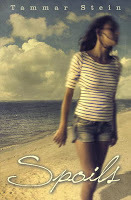
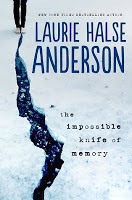
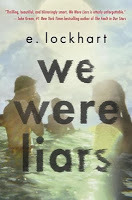
Spoils by Tammar Stein: I can't remember if I've talked about it on STACKED or only over here, but Tammar Stein's High Dive is one of my favorite YA novels. It's been years since I've read it, so my feelings towards it could certainly be different now, but the joy in sometimes not rereading a novel is that the sentimentality you have toward a book doesn't have to change.
Spoils looks like the kind of realistic fiction up my alley, though. It's about a family who comes into a financial windfall and what happens when it looks like that luck may run out. There are secrets and sibling relationships, and I have been really feeling stories about the impact of money on one's life. This one comes out December 10, but I've got a copy of it here and I have a feeling it'll be one I read over Thanksgiving weekend.
The Impossible Knife of Memory by Laurie Halse Anderson: Of course, I would give any YA book Laurie Halse Anderson writes a shot, but this one particularly struck me as one I should read because it tackles PTSD. I love the way Anderson writes about tough topics and does so in a way that isn't fleeting.
It kills me this is a January 2014 release because I feel like I've been reading about it forever, and I know I've had a copy of it on my ereader for months. I've been trying to hold off so I can savor it closer to release date, but I have a feeling I'm going to give in sooner, rather than later.
We Were Liars by E. Lockhart: Confession time -- I read this one already. This past weekend, in fact. It didn't necessarily pop on my radar as a book I was dying to read, but with all of the buzz surrounding it recently, much from other readers I trust and respect, I couldn't handle myself. One of the biggest elements of that buzz (which is laid out in the note from the editor at the front of the book!) is that going in not knowing is the best way to approach the book. I'm glad it was that that drew me in, but. . . I also feel a little weird that that is the selling point of the book at this point. Likewise, some of how it's been described makes me question whether I missed something huge or not (specifically, I'm a little curious about "a passionate, political boy" in the description, as I think that refers to the Indian teen in the story and there's some question in my mind whether "political" here is a poor word choice to not be describing someone who is actually involved in politics).
That said, Lockhart's writing and story telling skills are excellent. There are twists and turns in this one, and it's compelling. It will become a favorite for a lot of readers. But -- I didn't necessarily feel like this was all that fresh. The story utilizes many of the tropes common in horror stories, and it ties them together with bits and pieces of well-known fairy tales, legends, and classics of literature. It does this exceedingly well, and I enjoyed going through the story thinking to myself "this reminds me of King Lear" and "this reminds me of (horror film title I won't name since it'll spoil the book)." I may be alone in saying that I didn't necessarily find myself emotionally invested and I didn't walk away feeling devastated nor heart broken. I saw a lot of what happened coming, though again, there's no arguing Lockhart does it very well. I don't want to say a whole lot more because I don't want to spoil a book that's not due out until next May, but I will say it includes amnesia, some PTSD, rich white people, and a couple of dogs will lose their lives.
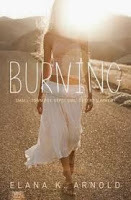
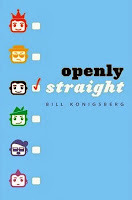
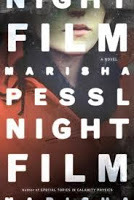
Burning by Elana K. Arnold: This one caught my eye at Kid Lit Con, when we did a book exchange. I picked it up, put it down, picked it up, put it down, and then decided to go ahead and bring it home. It's contemporary with two points of view, and it's by an author I've never heard of before. She's published a non-contemporary title in the past year, and it looks like she's got a couple of other books coming down the line. Burning Man? Nevada? Gypsies? It looks interesting. This book is available now.
Openly Straight by Bill Konigsberg: Konigsberg's first book is one of my favorite YA titles, and I picked this one up almost a year ago now and haven't touched it yet. I've read nothing but positive reviews. I am sort of surprised I let this one fall off my radar since I was so enthusiastic about it when I got it, but I hope to follow through with reading it sooner, rather than later. Konigsberg's book is out now.
Night Film by Marisha Pessl: Obviously, this one isn't YA, but adult fiction. It got so much buzz, and it sounds like the kind of thing that once you start, you're sucked in so tightly you don't want to stop until it's over. I've read small excerpts and I've enjoyed poring over how lovely the packaging of this book is, and it only makes me want to spend an entire weekend devouring it. But . . . I did read Pessl's first novel, which had some of the same treatments -- a nice package and good buzz -- and I found myself thinking it was really overblown and not enjoyable. I hope that doesn't happen this time around.
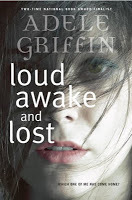
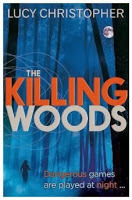
Loud Awake and Lost by Adele Griffin: I am hit and miss with Adele Griffin's books. I loved All You Never Wanted last year; I felt pretty middle-of-the-road about Tighter; and I wasn't a fan of The Julian Game. But I look forward to giving another one of her books a try, and this is her newest. It looks like it tackles some aspects of amnesia (which is quite the trend, as I noted above with the Lockhart title, as Kimberly looked at over here, and in another book on my radar, Natalie Richards's Six Months Later ). This book is out now.
I feel like this will be a nice warm up to Griffin's 2014 novel, The Unlikely Life of Addison Stone .
The Killing Woods by Lucy Christopher: I don't need to know more than it's a YA book by Christopher to be excited, but that it's also a murder mystery/thriller only makes me more excited to dive in. This one showed up in my mail on one of the days I was having a hard time with committee reading, and I have held off on indulging until I have another one of those days because I think it'll be a real treat and big change of reading pace. The Killing Woods will be out in January.
What's on your end-of-year radar? Are there things you're hoping to catch up with or get ahead on before 2014? Do you have any titles you'd suggest I think about putting into my pile so I don't miss them?






 Related StoriesTwitterview: Karen Sandler (+ giveaway!)Awakening by Karen SandlerFamily Life in Contemporary YA Fiction: Guest Post by Amy Spalding (Reece Malcolm List)
Related StoriesTwitterview: Karen Sandler (+ giveaway!)Awakening by Karen SandlerFamily Life in Contemporary YA Fiction: Guest Post by Amy Spalding (Reece Malcolm List)
I've still got roughly 35 books to finish before ALA Midwinter at the end of January, but because I can't keep at the pace I am with committee reading, I've had to allow myself breaks to put in a novel periodically. It refreshes my reading and it helps me look forward to the things I have to read, since I know I've rewarded myself with something I want to read.
Likewise, when the end of the year gets closer and closer, I start getting a little worked up about all of the things I didn't read that I wanted to read and all of the things I think I should read, both in anticipation of those "best of" lists and awards, as well as getting on top of next year's reading. So I've been making lists and organizing my reading based on those somewhat-arbitrary criteria.
Here's a look at what's on my short list and in my current pile of reading or will-be-reading-really soon and why.



Spoils by Tammar Stein: I can't remember if I've talked about it on STACKED or only over here, but Tammar Stein's High Dive is one of my favorite YA novels. It's been years since I've read it, so my feelings towards it could certainly be different now, but the joy in sometimes not rereading a novel is that the sentimentality you have toward a book doesn't have to change.
Spoils looks like the kind of realistic fiction up my alley, though. It's about a family who comes into a financial windfall and what happens when it looks like that luck may run out. There are secrets and sibling relationships, and I have been really feeling stories about the impact of money on one's life. This one comes out December 10, but I've got a copy of it here and I have a feeling it'll be one I read over Thanksgiving weekend.
The Impossible Knife of Memory by Laurie Halse Anderson: Of course, I would give any YA book Laurie Halse Anderson writes a shot, but this one particularly struck me as one I should read because it tackles PTSD. I love the way Anderson writes about tough topics and does so in a way that isn't fleeting.
It kills me this is a January 2014 release because I feel like I've been reading about it forever, and I know I've had a copy of it on my ereader for months. I've been trying to hold off so I can savor it closer to release date, but I have a feeling I'm going to give in sooner, rather than later.
We Were Liars by E. Lockhart: Confession time -- I read this one already. This past weekend, in fact. It didn't necessarily pop on my radar as a book I was dying to read, but with all of the buzz surrounding it recently, much from other readers I trust and respect, I couldn't handle myself. One of the biggest elements of that buzz (which is laid out in the note from the editor at the front of the book!) is that going in not knowing is the best way to approach the book. I'm glad it was that that drew me in, but. . . I also feel a little weird that that is the selling point of the book at this point. Likewise, some of how it's been described makes me question whether I missed something huge or not (specifically, I'm a little curious about "a passionate, political boy" in the description, as I think that refers to the Indian teen in the story and there's some question in my mind whether "political" here is a poor word choice to not be describing someone who is actually involved in politics).
That said, Lockhart's writing and story telling skills are excellent. There are twists and turns in this one, and it's compelling. It will become a favorite for a lot of readers. But -- I didn't necessarily feel like this was all that fresh. The story utilizes many of the tropes common in horror stories, and it ties them together with bits and pieces of well-known fairy tales, legends, and classics of literature. It does this exceedingly well, and I enjoyed going through the story thinking to myself "this reminds me of King Lear" and "this reminds me of (horror film title I won't name since it'll spoil the book)." I may be alone in saying that I didn't necessarily find myself emotionally invested and I didn't walk away feeling devastated nor heart broken. I saw a lot of what happened coming, though again, there's no arguing Lockhart does it very well. I don't want to say a whole lot more because I don't want to spoil a book that's not due out until next May, but I will say it includes amnesia, some PTSD, rich white people, and a couple of dogs will lose their lives.



Burning by Elana K. Arnold: This one caught my eye at Kid Lit Con, when we did a book exchange. I picked it up, put it down, picked it up, put it down, and then decided to go ahead and bring it home. It's contemporary with two points of view, and it's by an author I've never heard of before. She's published a non-contemporary title in the past year, and it looks like she's got a couple of other books coming down the line. Burning Man? Nevada? Gypsies? It looks interesting. This book is available now.
Openly Straight by Bill Konigsberg: Konigsberg's first book is one of my favorite YA titles, and I picked this one up almost a year ago now and haven't touched it yet. I've read nothing but positive reviews. I am sort of surprised I let this one fall off my radar since I was so enthusiastic about it when I got it, but I hope to follow through with reading it sooner, rather than later. Konigsberg's book is out now.
Night Film by Marisha Pessl: Obviously, this one isn't YA, but adult fiction. It got so much buzz, and it sounds like the kind of thing that once you start, you're sucked in so tightly you don't want to stop until it's over. I've read small excerpts and I've enjoyed poring over how lovely the packaging of this book is, and it only makes me want to spend an entire weekend devouring it. But . . . I did read Pessl's first novel, which had some of the same treatments -- a nice package and good buzz -- and I found myself thinking it was really overblown and not enjoyable. I hope that doesn't happen this time around.


Loud Awake and Lost by Adele Griffin: I am hit and miss with Adele Griffin's books. I loved All You Never Wanted last year; I felt pretty middle-of-the-road about Tighter; and I wasn't a fan of The Julian Game. But I look forward to giving another one of her books a try, and this is her newest. It looks like it tackles some aspects of amnesia (which is quite the trend, as I noted above with the Lockhart title, as Kimberly looked at over here, and in another book on my radar, Natalie Richards's Six Months Later ). This book is out now.
I feel like this will be a nice warm up to Griffin's 2014 novel, The Unlikely Life of Addison Stone .
The Killing Woods by Lucy Christopher: I don't need to know more than it's a YA book by Christopher to be excited, but that it's also a murder mystery/thriller only makes me more excited to dive in. This one showed up in my mail on one of the days I was having a hard time with committee reading, and I have held off on indulging until I have another one of those days because I think it'll be a real treat and big change of reading pace. The Killing Woods will be out in January.
What's on your end-of-year radar? Are there things you're hoping to catch up with or get ahead on before 2014? Do you have any titles you'd suggest I think about putting into my pile so I don't miss them?







 Related StoriesTwitterview: Karen Sandler (+ giveaway!)Awakening by Karen SandlerFamily Life in Contemporary YA Fiction: Guest Post by Amy Spalding (Reece Malcolm List)
Related StoriesTwitterview: Karen Sandler (+ giveaway!)Awakening by Karen SandlerFamily Life in Contemporary YA Fiction: Guest Post by Amy Spalding (Reece Malcolm List)
Published on November 24, 2013 22:00
November 21, 2013
Twitterview: Karen Sandler (+ giveaway!)
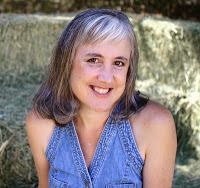 This month's twitterview guest is Karen Sandler, author of
Tankborn
and its sequel
Awakening
. Before diving into YA science fiction, she wrote over a dozen adult romances and is currently writing a mystery series as well (clearly an author after my own heart). Visit Karen on the web at www.karensandler.net, and enter for a chance to win a finished copy of Awakening at the end of the interview!
This month's twitterview guest is Karen Sandler, author of
Tankborn
and its sequel
Awakening
. Before diving into YA science fiction, she wrote over a dozen adult romances and is currently writing a mystery series as well (clearly an author after my own heart). Visit Karen on the web at www.karensandler.net, and enter for a chance to win a finished copy of Awakening at the end of the interview!1. Pitch the Tankborn series in 140 characters or fewer.
Genetically Engineered Non-human Kayla teams with trueborn Devak to fight for GEN equality and the right to love one another.
2. What inspired Tankborn and its sequels?
Fascination w/ genetic engineering, love of science fiction & YA literature, & a sci-fi movie script called ICER all spawned Tankborn.
3. Describe Kayla for us – what is she like?
Kayla is courageous but insecure, cynical but hopeful, loyal to a fault and a fighter for the underdog.
4. What is Kayla’s world – Loka – like?
Loka is a desert-like planet filled with arachnid-based creatures from the tiny slime beetles to the massive bhimkay spiders.
5. Loka feels like a living, breathing world. Each chapter – and each book – gives us more detail. What research went into its creation?
Much of it came from my imagination. I’m a “just in time” researcher, looking for details as I need them.
6. What inspired the caste system? Are its roots in Earth’s cultures?
I based Loka’s society on both the Indian caste system and America’s history of African enslavement.
7. How have readers reacted to the caste system, GENs, and other unpleasant aspects of Loka?
Many have commented on how thought-provoking the books are & how much the stories reflect both past history & present day events.
8. How likely do you think the world of Loka is for humanity’s future? Are GENs actually possible?
I do think GENs are possible. Some of the science is already there. But would creating humans for servitude be ethical?
9. What can you share about the third book in the series?
REBELLION will introduce new characters, bring back old characters & tie up all the loose ends of the first 2 books. Sorry, no spoilers :-)
10. What should readers walk away with from these books – if anything?
We are more alike than we are different. Wealth doesn’t equal superiority. We have to decide our own happiness, others can’t dictate it.
11. Tell us a little about the series’ path to publication.
Wrote book on spec (no contract), got a beta read & rewrote, queried 30 agents & found 1, agent marketed book, Lee & Low/Tu Books bought.
12. What were some of your favorite SF reads as a teen?
As a younger teen, I was a huge fan of Ray Bradbury. I’ve read nearly every book of his. Later, STRANGER IN A STRANGE LAND was a fave.
13. Tankborn is one of few YA SF novels starring a non-white protagonist. What other SF reads featuring people of color would you recommend?
All of the Tu Books releases, of course. Earthsea Trilogy. Liar. House of the Scorpion.
14. Can you talk a little about the importance of writing people of color in SF novels, and why you chose to do so?
I like to have a diverse cast of characters in all my books. But I feel it’s important that the POC be main char, not just sidekicks.
15. Who do you think is breaking ground in YA right now?
Tu Books. They’ve broken out of the Pretty White Girls on the Cover syndrome, put POC front & center on their covers & in their stories.
16. Describe your writing process.
I start as a plotter w/ a synopsis, then as I fill in the details of the story I go off the synopsis rails & write the book like a pantser.
17. What’s the best writing advice you ever received?
Seat of the pants on the seat of the chair. Thinking about writing, imagining writing, isn’t writing. Only actually writing is writing.
18. What’s your favorite writing advice to give?
When people give me ideas for stories, I say, that’s your story. You should be the one to write it.
19. Who are some of your writing influences?
Ray Bradbury & Lois McMaster Bujold (SF), Anne Stuart (romance), John Green & Neal Shusterman (YA), Dick Francis (mystery)
20. What do you like to do in your free time?
I do international folk dance, and love to ride horses (dressage). And I read, read, read.
21. Aside from the third Tankborn book, what’s next for you?
I’m currently working on HANGTOWN FRY, a sequel my mystery, CLEAN BURN. HANGTOWN FRY will be released in 2014 by Exhibit A.
Loading...







 Related StoriesTwitterview: Phoebe NorthAwakening by Karen SandlerFamily Life in Contemporary YA Fiction: Guest Post by Amy Spalding (Reece Malcolm List)
Related StoriesTwitterview: Phoebe NorthAwakening by Karen SandlerFamily Life in Contemporary YA Fiction: Guest Post by Amy Spalding (Reece Malcolm List)
Published on November 21, 2013 22:00
November 20, 2013
Awakening by Karen Sandler
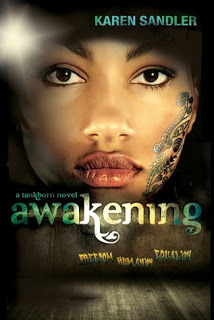 I really enjoyed
Tankborn
, the first in Karen Sandler's futuristic series featuring a world (called Loka) where some human beings are genetically engineered for hard labor and other undesirable tasks - a scientifically designed slave class. Our protagonist, Kayla, is one of these GENs - genetically engineered non-humans. At age 15, she was assigned to work for a powerful high-born man who turned out to be the leader of the Kinship, an organization dedicated to transforming the society on Loka, freeing GENs from their crippling restrictions, and gaining them rights of full humans - as the Kinship believes they are. Awakening continues this story, after Kayla has joined the Kinship in her own right.
I really enjoyed
Tankborn
, the first in Karen Sandler's futuristic series featuring a world (called Loka) where some human beings are genetically engineered for hard labor and other undesirable tasks - a scientifically designed slave class. Our protagonist, Kayla, is one of these GENs - genetically engineered non-humans. At age 15, she was assigned to work for a powerful high-born man who turned out to be the leader of the Kinship, an organization dedicated to transforming the society on Loka, freeing GENs from their crippling restrictions, and gaining them rights of full humans - as the Kinship believes they are. Awakening continues this story, after Kayla has joined the Kinship in her own right.While Tankborn focused on both Kayla and her best friend Mishalla, another GEN, Awakening focuses almost entirely on Kayla, with the majority of the story told from her third-person perspective. There's a lot going on with Kayla in this installment. She struggles with her feelings for Devak, the grandson of the Kinship's leader, a trueborn boy. There's another GEN boy in the picture, Abran, who has secrets of his own. Then there's the fact that Kayla keeps discovering things hidden in her brain, downloaded and installed there by an unknown person, that hint at a splinter group called FHE: Freedom, Humanity, Equality.
I assumed that much of the story would entail Kayla's fight for equality with the Kinship, but that's not quite the direction the book takes. Instead, a large part focuses on a disease affecting GENs (and only GENs) called Scratch. Even more mysteriously than the disease itself, which has no known cure, is the fact that some GENs seem to have the ability to heal others of Scratch simply by touch.
There's a lot going on in the book, obviously, but I found it to be much slower than Tankborn despite this. It seems less focused and more meandering, with a few too many sections of dialogue where characters simply muse on what to do next instead of just doing it. A benefit to this, though, is that we get a lot more insight into Loka - its culture, its wildlife, and its environment. We learn more about Loka's moons and their cycles, about the allabain people and their religious beliefs, about the history of the settlements. As a result, Loka feels like a living, breathing place, and it's clear Sandler has put a lot of thought into making it seem so. Things like this are of huge interest to readers who love detailed world-building, but may be tedious for those who want a more plot-driven story.
I mentioned it in my review of Tankborn, but it bears mentioning again: Kayla is a black girl, and she is the star of this series. She's not the best friend or the villain; she doesn't even share protagonist status in this volume like she did in the first. What's more, her face is prominently featured on the cover of the book. The series is published by Tu Books, an imprint of Lee and Low, who are dedicated to promoting culturally diverse books. In science fiction and fantasy, the lack of protagonists of color is a worrying problem, so books like this are essential.
While I don't think this series will necessarily appeal to casual SF readers, it will most certainly appeal to seasoned ones, and I hope they'll give it a try - it's original, well-written, and unpredictable. We need to show that we want more SF stories like this featuring girls of color - and the way to do that is to read them, talk about them, and buy them.
Check back tomorrow for a twitterview with Karen Sandler addressing some of these things, plus a giveaway of a finished copy of Awakening.
Review copy provided by the publisher.







 Related StoriesMovie Review: Catching FireFamily Life in Contemporary YA Fiction: Guest Post by Amy Spalding (Reece Malcolm List)Paging Back: Diversity in Contemporary YA, The Role of Sports, Contemporary Series Books, and Girls of All Flavors.
Related StoriesMovie Review: Catching FireFamily Life in Contemporary YA Fiction: Guest Post by Amy Spalding (Reece Malcolm List)Paging Back: Diversity in Contemporary YA, The Role of Sports, Contemporary Series Books, and Girls of All Flavors.
Published on November 20, 2013 22:00
November 19, 2013
Movie Review: Catching Fire
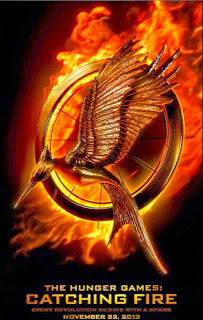 I feel like movie adaptations of young adult novels (as opposed to adult novels) have a lot of baggage to carry, doubly so if the movie and novel are SFF. Take this review of The Book Thief film adaptation (but do brace yourself before reading it, as it's irritating on multiple levels).
I feel like movie adaptations of young adult novels (as opposed to adult novels) have a lot of baggage to carry, doubly so if the movie and novel are SFF. Take this review of The Book Thief film adaptation (but do brace yourself before reading it, as it's irritating on multiple levels). What I get from that review and others of its ilk is that a young adult film adaptation not only has to be a good movie for teens, it also has to be a good movie for adults, which is, of course, better. Touching on adolescent emotions and interests is beneath adults, really - no matter that all adults were at one point adolescents themselves (except, perhaps, for Godfrey Cheshire?). I would even go so far as to say that a young adult film adaptation would be lauded if it appealed to adults at the expense of its appeal to teens. It's the same sort of thing I see when SFF films (for any age group) are reviewed: the movie must appeal to non-SFF fans if it's to be taken seriously, if it's to be called truly good.
All of this intro is to say that snooty, stick-up-their-you-know-whats reviewers shouldn't have a problem with Catching Fire. It's a very good movie in its own right. It will most certainly satisfy teen viewers. It will also appeal to adults, which doesn't necessarily make it better, but it certainly makes it more lucrative.
Like the book, this film has a much slower burn than The Hunger Games. I'd say that a good half - or perhaps more - is occupied with events prior to the Quarter Quell. I don't mean to say it's boring; it's far from that. In fact, these sections before the more overt violence in the arena are just as horrifying - but in a different way. When Katniss makes a fatal mistake during her performance in the Victory Tour, and someone dies as a result, it all becomes clear: even the tiniest of wrong moves has deadly effects. This is something the book and the movie both do very well.
Once the Quarter Quell actually begins, the tension ratchets up 200%. As a viewer who knew precisely what would happen and when, I still found myself breathless at several points, shouting in my head to "run faster!" or "look behind you!" I was disappointed by one instance of a "jack-in-the-box scare," which is a cheap ploy and never executed well, but aside from that, the arena is just as action-packed and horrifying as it should be.
Collins' killer story (pun intended, so sorry) is buoyed by excellent acting on almost all fronts. Jennifer Lawrence is amazing, as I knew she would be. I was surprised to learn after watching the film that people doubted Sam Claflin as Finnick; he was terrific, with a 1000-watt grin that fits precisely my recollection of the character. (In fact, I cared a bit more about him in the movie than the book!) Woody Harrelson as Haymitch is hilarious but also capable of gravity; Elizabeth Banks as Effie shows us that she's more than sparkly hair in this installment as well. Lenny Kravitz (Cinna), Donald Sutherland (President Snow), Stanley Tucci (Caesar Flickerman), and Jena Malone (Johanna Mason) are all excellent too. They're all memorable, they all make an impact, and they all manage to be more than one-note characters.
The two main boys (Gale and Peeta) are still merely OK. Since Liam Hemsworth (Gale) is given more to do than just mope in the field, he fares a little better in this installment, but I still cringed every time he called Katniss "catnip." And I know there are Peeta fans out there, but I still find his character pretty bland, and Josh Hutcherson didn't do anything to change that opinion. (This does change in the third book, when Peeta becomes very interesting indeed, thanks to some Capitol torture. Yes, I realize how heartless that sentence makes me sound.)
I wasn't bothered by anything that was in the book but didn't make it into the movie, though I'm sure some others will be (perhaps the fact that there is no Bonnie and Twill will be most upsetting, but who knows). Unlike some other readers, I don't have all details committed to memory, so chances are I don't even remember something that may upset someone else.
I did take note of a couple of things that the filmmakers added which I really liked. The first is a lot of dialogue between Plutarch Heavensbee (portrayed by Philip Seymour Hoffman) and President Snow (and these conversations made me doubt my recollection of Heavensbee's true goals, Hoffman is so good at his manipulation of Snow - and the audience). Since the book is told from Katniss' point of view, these type of scenes aren't possible there. This is just one example of how certain media forces a different kind of storytelling - and that's a good thing. Movies are not books. We don't get as much insight into Katniss' head in the movie, but we do get these juicy scenes between characters that are not Katniss. It adds a layer of richness to the story that I love. It also enhances the world-building immensely, something I found lacking at times in the books.
Another addition is President Snow's young granddaughter. She's a very clever device, seen in a few brief conversations with her grandfather, usually talking about what a fan she is of Katniss. It brings home to President Snow - quite literally - just what Katniss has been doing to Panem. And of course Donald Sutherland is remarkable, allowing the audience to both laugh at him and be horrified at what it all means.
As with the first movie, Catching Fire's visuals are very slick. The special effects make everything look authentic. This sort of thing is often seen as tangential by some reviewers, but it's so essential in a movie like this. The Capitol truly is an incredible sight. The districts are equally incredible, but for very different reasons. The excellent visual effects create the buy-in necessary for the audience to be fully invested in the story.
I was happy to see that there was much less shaky cam during the action scenes. There's not a lot of blood, though the camera does focus on some other gruesome aspects (I had to turn my head away during one scene). As the shaky cam was my primary issue with the first film, I'd say I enjoyed this one a little more. In fact, when it ended, I turned to my boyfriend and told him I wanted to see it again.







 Related StoriesPrimates by Jim Ottaviani and Maris WicksThe In-Between by Barbara StewartAudiobook Review: The Waking Dark by Robin Wasserman
Related StoriesPrimates by Jim Ottaviani and Maris WicksThe In-Between by Barbara StewartAudiobook Review: The Waking Dark by Robin Wasserman
Published on November 19, 2013 22:00
Contemporary YA Week Wrap Up -- And A Bit About Kelly's Book
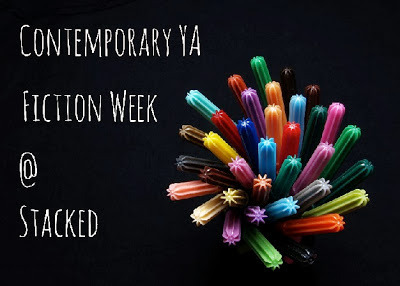
To wrap up Contemporary YA Week here at STACKED, I wanted to send a huge thank you both to our guest contributors, as well as to our readers who keep asking for more posts about contemporary YA. In fact, I've already received some suggestions for what to consider next year, and I'm compiling a list of those topics so that I can try to make it happen.
If there's ever a topic that interests you as a reader, I'd love to know. Or if there are things you've thought about this week you'd like to read more about, leave those things in the comments. I can't always follow up or through, but I do always think about them. And I hope the booklists, as well as the rerunning of some older content was valuable, too.
So please, feel free to give us feedback or suggestions or ideas for future contemporary week features -- as well as ideas for posts about contemporary realistic fiction outside of this series -- because it's helpful to us to know what's of interest.
Just because it's fitting -- and because I'm about to dig into revising -- I thought it'd be worthwhile to talk a little bit more about my book about contemporary YA too.
The Real Deal: A VOYA Guide to Contemporary Fiction for Young Adult Readers should be out sometime next year, and you can add it to your Goodreads shelf if you want to. As it stands, I've not added a short description because the description of the book's fairly evident from the title.
My book has three distinct parts that all build upon one another. The first part talks about how we define contemporary YA, how reader's advisory for contemporary YA works, how to be effective and innovative in your reader's advisory and book recommendations, and gives you the raw tools for working with YA readers and contemporary YA fiction.
The second part contains 10 thematic book lists, each with 15 annotations that can be used not only as book descriptions, but as book talks. They also include read alikes and appeal factors for making connections between and among different books beyond those within the thematic list itself (in other words, while the book list might be about health and well-being, the appeal factors might hit on the fact the book has a great family element to it, making it connect with some of the books in the relationships book list). At the end of each of those thematic book lists is a long list of other books, too. Here's a sample of one of the annotations:
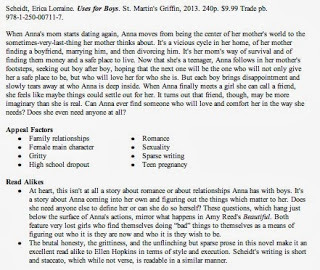
Finally, the third part of the book might be my favorite: conversation starters. I've pulled from the book lists and pooled together five or more books on a big and heavy topic and developed a series of questions and discussion fodder for them. Some of the topics include sex and sexual assault, military service, body image, and more. Essentially, this portion of the book puts the things in part one together with the things in part two and offers a way into talking about tough or touchy subjects with readers. This was the most fun and most challenging to write, but it's also the part I think will offer the most value. I hope, at least!
Nearly every chapter in the book -- and there are 22 -- begins with insight from a variety of contemporary YA authors, as well as teachers and other librarians, about what contemporary YA has influenced them or how it is they implement contemporary YA into their own work. I thought it was really important to incorporate some other voices into the book, and I'm really pleased not only with what those contributors had to offer, but how well those contributions played into the things I was talking about in my book.
There's really not much more to report at this stage in the process. The book's been with my editor and the publisher now for a few months, and it's in line for the design process, meaning there will be something that looks like a book-shaped thing very soon. In the mean time, I'm writing an index (yes, writing my own index) and going through the manuscript itself to clarify, tighten, and reword some of the things I haven't looked at since I turned it in. I'm hoping to sneak in a few more titles into my book lists, as well, since I've read quite a bit in the interim.
I'm excited about this book and pleased with how it all came together. I think it'll be really useful for those who love contemporary YA and those who work with YA readers in particular. And of course, when I know more -- publication date, cover, so forth -- I'll share. But I believe this update pretty much covers what to expect content wise.
Perhaps the best part is at this point, I still love contemporary YA and I think that maybe I like it even more now that I've spent so much time thinking about it. In fact, I feel like after writing it, I could write even more books on some of the things I hit on within it. Maybe some day!







 Related StoriesThe Male Voice in Contemporary YA Fiction: Guest Post by Steve Brezenoff (Brooklyn Burning, Guy in Real Life)2014 Contemporary YA Books to Get On Your RadarFeminism in Contemporary YA Fiction: Guest Post by Trish Doller (Where the Stars Still Shine)
Related StoriesThe Male Voice in Contemporary YA Fiction: Guest Post by Steve Brezenoff (Brooklyn Burning, Guy in Real Life)2014 Contemporary YA Books to Get On Your RadarFeminism in Contemporary YA Fiction: Guest Post by Trish Doller (Where the Stars Still Shine)
Published on November 19, 2013 10:00
November 18, 2013
The Male Voice in Contemporary YA Fiction: Guest Post by Steve Brezenoff (Brooklyn Burning, Guy in Real Life)
We're going to wrap up our third annual contemporary week series talking about boys. As you may have noticed or noted, so far all of the guest posts were written by women, the bulk of whom have written primarily female voices in their novels. Although anyone who has checked out the "paging back" posts would know, we've had many awesome male writers and male voices featured here, too.
But I wanted to offer a challenge to today's guest poster. My prompt to him was huge -- and vague. I asked him to write about the male voice in contemporary YA fiction. And let me just say: Steve Brezenoff delivered. What is the male voice in contemporary YA? Where can you find it? How is this in conversation with everything else that's popped up during the series?
In other words: what about the "boy books?"
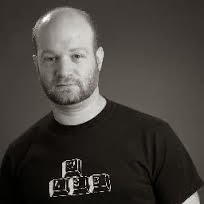
Steve Brezenoff is the author of the young adult novels The Absolute Value of -1, starring two boy characters and one girl character, and Brooklyn, Burning, starring two ungendered characters, as well as dozens of chapter books for younger readers, with loads and loads of boy and girl characters. His third novel, Guy in Real Life, will be out out in May of 2014 and has one boy protagonist and one girl protagonist who will vie for your empathy. You can visit him at www.stevebrezenoff.com.
The Male Voice in Contemporary Young Adult Fiction: What Does That Even Mean?
Okay, yeah. I kind of know what it means. It means central male characters portrayed accurately in novels for teens. It means doing one’s best in fiction to move away from boy tropes. It means creating young adult novels that have appeal for boy/guy/dude/bro readers. I guess.
But none of those truisms have any real meaning themselves, because while we often hear that stories for or about boys need certain things that are presumably missing from stories that aren’t for or about boys—things like humor and action and sports—that’s of course hogwash, for a number of reasons.
There’s no such as a book “for” boys.
Not all boys look for the same things in a book. Maybe most boys want blow-by-blow sports stories, or novelized video games, or nonstop violence, or unyielding lowbrow humor. But maybe they don’t.
These things aren’t missing from books written “for” girls.
Believe me, it pains me already to have implied there are books written for girls or for boys, but for the moment just bear with me. That said, many of the books that people might see as written for girls contain loads of humor, action, or sports—sometimes all three.
A book needn’t be about a boy or about a girl.
It’s been said many times, but it ought to be said many more until conversations like this one can go unconversated: If we as writers and readers of fiction continue to imply that boys/guys/dudes/bros shouldn’t or can’t or won’t or mustn’t read books with a girl protagonist, then this false dichotomy will continue.
At this point it probably seems like I’ve really gone off track, but I haven’t. I’m circling the theme here, like a shark: male characters in young adult realistic fiction. What makes a good one? Do we need to see more of them? Are the current crop of male characters inadequate of worthy of scorn?
What makes a good one?
He doesn’t need to crack immature jokes, though he might. He doesn’t need to comment on every set of breasts he sees, though he might. He doesn’t need to love sports or comics or hard rock, though he might. A good male character in contemporary fiction needs the same qualities that every character in contemporary fiction needs: an authentic voice, clear and compelling motivation, something to lose and something to gain. Without those, any character will feel at times flat, unbelievable, Mary Sue-ish, or some other typical criticism we hear about characters that don’t ring quite true.
Do we need to see more of them?
We need to see more characters that we find compelling, be they boys or girls, not because there’s a shortage, but because that’s what realistic fiction is, and we love realistic fiction. So yes, we want more. Implicit here (and throughout this column) is the idea that our boys/guys/dudes/bros should (yes, should; I don’t much like to use that word, but I am in this case) read realistic fiction that features girl protagonists. Would it be easier probably for many boys to pick up a novel if the main character were a boy? I suppose. And I suppose that I wish that weren’t the case.
Is the current crop of male characters inadequate or worthy of scorn?
No.
What I mean here specifically are the boys in some works of realistic fiction that don’t feel quite realistic: boys with beautiful abs and arms and eyes and hair. Boys who, despite being firmly in their adolescence, can charm and disarm a girl with the greatest of ease. Do these boys exist? I suppose they do in some small number. I’ve never met them. If I have, then I’ve blocked that memory because it made me feel super inadequate probably. But I digress.
The point is, we are often dismissive of such characters, as if there’s only one way to write a secondary character, especially within realistic fiction, but I don’t agree. The spiel I’ve put forth above is merely what I’d like to see, forever and always, in contemporary fiction. This doesn’t mean that writers of novels for teens need to stop creating characters that do little more than handsomely and charmingly fill a space in their story—act as a vehicle for a protagonist’s development. Sometimes that’s just what the reader wants, and there’s not a thing wrong with that.
I’m a thirty-nine-year-old man. I’m different from your average teen boy reader in a lot of ways. I have a child. I have loads of life experience. I have twenty-plus years on the boy/guy/dude/bro readers and characters we’re talking about here. Still. I’ve written and read and found compelling and had empathy for boy characters and girl characters and neither characters. I’ve just finished reading several Anne of Green Gables books. I love reading Sara Zarr and Nova Ren Suma as much as I love reading Jon Skovron and Geoff Herbach. I’ve read compelling male voices from people like Carrie Mesrobian and Mindi Scott, and I’ve read compelling female voices from people like Pete Hautman and Blake Nelson and John Green.
So while I don’t think we’re at end of this conversation, let’s try to move through it with a little hope for the young men of today—that they’re capable and willing to read and feel empathy for girl characters, as we know girls are to read and feel empathy for boy characters. Let’s not pretend that there’s something inherently anti-girl about being a boy, and that there’s something inherently emasculating about empathizing with girl characters, or with empathy itself. Our boys are complex creatures, just like our girls, and they can (and should!) read stories about all people and all things, and we must stop pretending that they mustn’t.






 Related Stories2014 Contemporary YA Books to Get On Your RadarFeminism in Contemporary YA Fiction: Guest Post by Trish Doller (Where the Stars Still Shine)Contemporary YA Books Featuring Family Stories
Related Stories2014 Contemporary YA Books to Get On Your RadarFeminism in Contemporary YA Fiction: Guest Post by Trish Doller (Where the Stars Still Shine)Contemporary YA Books Featuring Family Stories
But I wanted to offer a challenge to today's guest poster. My prompt to him was huge -- and vague. I asked him to write about the male voice in contemporary YA fiction. And let me just say: Steve Brezenoff delivered. What is the male voice in contemporary YA? Where can you find it? How is this in conversation with everything else that's popped up during the series?
In other words: what about the "boy books?"

Steve Brezenoff is the author of the young adult novels The Absolute Value of -1, starring two boy characters and one girl character, and Brooklyn, Burning, starring two ungendered characters, as well as dozens of chapter books for younger readers, with loads and loads of boy and girl characters. His third novel, Guy in Real Life, will be out out in May of 2014 and has one boy protagonist and one girl protagonist who will vie for your empathy. You can visit him at www.stevebrezenoff.com.
The Male Voice in Contemporary Young Adult Fiction: What Does That Even Mean?
Okay, yeah. I kind of know what it means. It means central male characters portrayed accurately in novels for teens. It means doing one’s best in fiction to move away from boy tropes. It means creating young adult novels that have appeal for boy/guy/dude/bro readers. I guess.
But none of those truisms have any real meaning themselves, because while we often hear that stories for or about boys need certain things that are presumably missing from stories that aren’t for or about boys—things like humor and action and sports—that’s of course hogwash, for a number of reasons.
There’s no such as a book “for” boys.
Not all boys look for the same things in a book. Maybe most boys want blow-by-blow sports stories, or novelized video games, or nonstop violence, or unyielding lowbrow humor. But maybe they don’t.
These things aren’t missing from books written “for” girls.
Believe me, it pains me already to have implied there are books written for girls or for boys, but for the moment just bear with me. That said, many of the books that people might see as written for girls contain loads of humor, action, or sports—sometimes all three.
A book needn’t be about a boy or about a girl.
It’s been said many times, but it ought to be said many more until conversations like this one can go unconversated: If we as writers and readers of fiction continue to imply that boys/guys/dudes/bros shouldn’t or can’t or won’t or mustn’t read books with a girl protagonist, then this false dichotomy will continue.
At this point it probably seems like I’ve really gone off track, but I haven’t. I’m circling the theme here, like a shark: male characters in young adult realistic fiction. What makes a good one? Do we need to see more of them? Are the current crop of male characters inadequate of worthy of scorn?
What makes a good one?
He doesn’t need to crack immature jokes, though he might. He doesn’t need to comment on every set of breasts he sees, though he might. He doesn’t need to love sports or comics or hard rock, though he might. A good male character in contemporary fiction needs the same qualities that every character in contemporary fiction needs: an authentic voice, clear and compelling motivation, something to lose and something to gain. Without those, any character will feel at times flat, unbelievable, Mary Sue-ish, or some other typical criticism we hear about characters that don’t ring quite true.
Do we need to see more of them?
We need to see more characters that we find compelling, be they boys or girls, not because there’s a shortage, but because that’s what realistic fiction is, and we love realistic fiction. So yes, we want more. Implicit here (and throughout this column) is the idea that our boys/guys/dudes/bros should (yes, should; I don’t much like to use that word, but I am in this case) read realistic fiction that features girl protagonists. Would it be easier probably for many boys to pick up a novel if the main character were a boy? I suppose. And I suppose that I wish that weren’t the case.
Is the current crop of male characters inadequate or worthy of scorn?
No.
What I mean here specifically are the boys in some works of realistic fiction that don’t feel quite realistic: boys with beautiful abs and arms and eyes and hair. Boys who, despite being firmly in their adolescence, can charm and disarm a girl with the greatest of ease. Do these boys exist? I suppose they do in some small number. I’ve never met them. If I have, then I’ve blocked that memory because it made me feel super inadequate probably. But I digress.
The point is, we are often dismissive of such characters, as if there’s only one way to write a secondary character, especially within realistic fiction, but I don’t agree. The spiel I’ve put forth above is merely what I’d like to see, forever and always, in contemporary fiction. This doesn’t mean that writers of novels for teens need to stop creating characters that do little more than handsomely and charmingly fill a space in their story—act as a vehicle for a protagonist’s development. Sometimes that’s just what the reader wants, and there’s not a thing wrong with that.
I’m a thirty-nine-year-old man. I’m different from your average teen boy reader in a lot of ways. I have a child. I have loads of life experience. I have twenty-plus years on the boy/guy/dude/bro readers and characters we’re talking about here. Still. I’ve written and read and found compelling and had empathy for boy characters and girl characters and neither characters. I’ve just finished reading several Anne of Green Gables books. I love reading Sara Zarr and Nova Ren Suma as much as I love reading Jon Skovron and Geoff Herbach. I’ve read compelling male voices from people like Carrie Mesrobian and Mindi Scott, and I’ve read compelling female voices from people like Pete Hautman and Blake Nelson and John Green.
So while I don’t think we’re at end of this conversation, let’s try to move through it with a little hope for the young men of today—that they’re capable and willing to read and feel empathy for girl characters, as we know girls are to read and feel empathy for boy characters. Let’s not pretend that there’s something inherently anti-girl about being a boy, and that there’s something inherently emasculating about empathizing with girl characters, or with empathy itself. Our boys are complex creatures, just like our girls, and they can (and should!) read stories about all people and all things, and we must stop pretending that they mustn’t.







 Related Stories2014 Contemporary YA Books to Get On Your RadarFeminism in Contemporary YA Fiction: Guest Post by Trish Doller (Where the Stars Still Shine)Contemporary YA Books Featuring Family Stories
Related Stories2014 Contemporary YA Books to Get On Your RadarFeminism in Contemporary YA Fiction: Guest Post by Trish Doller (Where the Stars Still Shine)Contemporary YA Books Featuring Family Stories
Published on November 18, 2013 22:00
November 17, 2013
Feminism in Contemporary YA Fiction: Guest Post by Trish Doller (Where the Stars Still Shine)
With all of the talk of gender and feminism over the last year and some change here at Stacked and in other venues, it seemed only fitting we'd have a post about feminism in contemporary YA fiction. Because Trish's latest book Where the Stars Still Shine hit on many things I've been thinking about when it comes to female sexuality, autonomy, and more, I had to ask if she'd write about this topic. So she's here today to talk about what it is to be a feminist writer and what it is to tackle feminist topics within a realistic novel -- and maybe even beyond.
We'll have one more guest post tomorrow as our final piece in the contemporary YA week-and-a-half series, and it is in great conversation not just with Trish's piece, but with many of the other posts that came through the series -- and beyond.
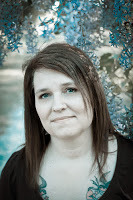
Trish Doller is the author of Something Like Normal, Where the Stars Still Shine, and the book formerly known as Arcadia Falls. When she's not writing, she's goofing off on tumblr. But don't tell her publisher, okay?
A couple of months ago, Lauren Myracle and I did a chat together on twitter and during the chat she asked me if I considered myself a feminist writer. The question took me aback because I’d never really thought about it. I wasn’t sure. In Something Like Normal, Harper isn’t the main character but a love interest who can stand up to a broken boy. She is kind––both to herself and others––but also not afraid to say what needs to be said.
So I thought...maybe I am a feminist writer?
Then I considered Callie in Where the Stars Still Shine, a girl who is openly reclaiming her sexual agency in the aftermath of abuse. It contains the sexiest scenes I’ve ever written and I was worried because what kind of message would I be sending to teenage girls? But here’s the thing: that is the message. Sex is for girls, too. Where the Stars Still Shine advocates for sex that is responsible, but also enjoyable, especially when it’s a partner who is respectful of your boundaries and thoughtful of your needs. And I’m never going to apologize for that message.
So, yeah, I am working my way toward being a feminist writer.
Except in my upcoming novel, readers will meet Cadie, a girl who––in the wake of her mother’s death––has spent a good portion of her teenage years looking after herself and her home, and raising a little brother. Cadie is a resourceful girl, a brave girl––the kind of girl who passed her Wonder Woman doll on to her brother, along with a conversation about how all toys are for all kids. She knows her mind (see above: agency) and she fights her own battles––even when her life is at stake.
So, yes, Lauren Myracle! Yes! I am a feminist writer.
But honestly? I didn’t set out to write this post about me. I set out to write about authors like Lauren Myracle, whose The Infinite Moment of Us is a brilliant example of feminist young adult fiction. It’s probably one of the sexiest books I’ve ever read, but Charlie and Wren discuss condoms and HIV testing as part of a bigger conversation about the what, when, where, why, and how of their first sexual experience together. All while wrapping it in a breathtaking, swoony romance. I joke that when I’m nervous about what I’m writing I’ll ask myself What Would Lauren Myracle Do? and then I do it. But it’s not really a joke. When you’re caught in the thrall of first love it’s so easy to get swept up in the moment (no pun intended) so I love the deftness and sensitivity Myracle employs in handling responsibility and waiting for the right time.
Another of my favorite feminist authors is Siobhan Vivian. The List is a thoughtful examination of beauty and how perception––external and internal––shapes self-esteem in teenage girls. While I think Vivian didn’t have enough page space to delve deeper into each character, I think the book makes a great springboard for further discussion––something I plan to do with my young adult book club. I also loved Vivian’s Not That Kind of Girl, which not only takes a hard look at slut shaming, but also overturns the idea that a strong girl isn’t made weak because she falls in love.
There’s been a lot of controversy over Bennett Madison’s September Girls is feminist or misogynistic. And I’ll admit...when I first read it, I was put off by the sexist behavior of virtually guy in the book and the way DeeDee called every girl a ho. Except these are the messages bombarding teenagers daily, telling them what it means to be a man or a woman. The pressure is immense and, like it or not, these messages shape them––shape us––into imperfect and sometimes terrible beings. I think the genius of September Girls is the way Madison’s characters navigate their way through the false messages to discover on their own what it means to be a man or a woman. Or, a mermaid? Of course, the other debate here is whether or not September Girls is actually contemporary or paranormal because the summer girls are mermaids, right? Or are they metaphor?
One of my favorite books––feminist or otherwise––is Simmone Howell’s Everything Beautiful with a main character whose weight problem isn’t solved by the end of the novel. Riley owns her fat body. She loves her body. She falls for a boy who thinks she’s beautiful. (Who, by the way, is in a wheelchair. You go, Simmone!) And while Riley begins the story with a prickly personality––rooted in her mother’s death two years earlier––as she slowly lets down her guard, she realizes other people love her, too, fat body and all.
Finally I really can’t write about feminist books without mentioning E. Lockhart, whose entire body of work is supported by a spine of feminism. While I’m eagerly awaiting her upcoming We Were Liars, I’ve been re-reading some of her backlist, including The Disreputable History of Frankie-Landau Banks, which gives readers so much to think about when it comes to class and gender privilege. And I think it looks at feminism in a realistic way as Frankie learns feminism means more than just having what boys have––and eschewing “girly” pursuits––and that the road to social justice can be pretty damn frustrating.
Very soon––I hope––I will be finished with the book formerly known as Arcadia Falls and when that happens I’m going to need some great feminist YA reads. Any suggestions?






 Related StoriesContemporary YA Books Featuring Family StoriesFamily Life in Contemporary YA Fiction: Guest Post by Amy Spalding (Reece Malcolm List)Paging Back: Diversity in Contemporary YA, The Role of Sports, Contemporary Series Books, and Girls of All Flavors.
Related StoriesContemporary YA Books Featuring Family StoriesFamily Life in Contemporary YA Fiction: Guest Post by Amy Spalding (Reece Malcolm List)Paging Back: Diversity in Contemporary YA, The Role of Sports, Contemporary Series Books, and Girls of All Flavors.
We'll have one more guest post tomorrow as our final piece in the contemporary YA week-and-a-half series, and it is in great conversation not just with Trish's piece, but with many of the other posts that came through the series -- and beyond.

Trish Doller is the author of Something Like Normal, Where the Stars Still Shine, and the book formerly known as Arcadia Falls. When she's not writing, she's goofing off on tumblr. But don't tell her publisher, okay?
A couple of months ago, Lauren Myracle and I did a chat together on twitter and during the chat she asked me if I considered myself a feminist writer. The question took me aback because I’d never really thought about it. I wasn’t sure. In Something Like Normal, Harper isn’t the main character but a love interest who can stand up to a broken boy. She is kind––both to herself and others––but also not afraid to say what needs to be said.
So I thought...maybe I am a feminist writer?
Then I considered Callie in Where the Stars Still Shine, a girl who is openly reclaiming her sexual agency in the aftermath of abuse. It contains the sexiest scenes I’ve ever written and I was worried because what kind of message would I be sending to teenage girls? But here’s the thing: that is the message. Sex is for girls, too. Where the Stars Still Shine advocates for sex that is responsible, but also enjoyable, especially when it’s a partner who is respectful of your boundaries and thoughtful of your needs. And I’m never going to apologize for that message.
So, yeah, I am working my way toward being a feminist writer.
Except in my upcoming novel, readers will meet Cadie, a girl who––in the wake of her mother’s death––has spent a good portion of her teenage years looking after herself and her home, and raising a little brother. Cadie is a resourceful girl, a brave girl––the kind of girl who passed her Wonder Woman doll on to her brother, along with a conversation about how all toys are for all kids. She knows her mind (see above: agency) and she fights her own battles––even when her life is at stake.
So, yes, Lauren Myracle! Yes! I am a feminist writer.
But honestly? I didn’t set out to write this post about me. I set out to write about authors like Lauren Myracle, whose The Infinite Moment of Us is a brilliant example of feminist young adult fiction. It’s probably one of the sexiest books I’ve ever read, but Charlie and Wren discuss condoms and HIV testing as part of a bigger conversation about the what, when, where, why, and how of their first sexual experience together. All while wrapping it in a breathtaking, swoony romance. I joke that when I’m nervous about what I’m writing I’ll ask myself What Would Lauren Myracle Do? and then I do it. But it’s not really a joke. When you’re caught in the thrall of first love it’s so easy to get swept up in the moment (no pun intended) so I love the deftness and sensitivity Myracle employs in handling responsibility and waiting for the right time.
Another of my favorite feminist authors is Siobhan Vivian. The List is a thoughtful examination of beauty and how perception––external and internal––shapes self-esteem in teenage girls. While I think Vivian didn’t have enough page space to delve deeper into each character, I think the book makes a great springboard for further discussion––something I plan to do with my young adult book club. I also loved Vivian’s Not That Kind of Girl, which not only takes a hard look at slut shaming, but also overturns the idea that a strong girl isn’t made weak because she falls in love.
There’s been a lot of controversy over Bennett Madison’s September Girls is feminist or misogynistic. And I’ll admit...when I first read it, I was put off by the sexist behavior of virtually guy in the book and the way DeeDee called every girl a ho. Except these are the messages bombarding teenagers daily, telling them what it means to be a man or a woman. The pressure is immense and, like it or not, these messages shape them––shape us––into imperfect and sometimes terrible beings. I think the genius of September Girls is the way Madison’s characters navigate their way through the false messages to discover on their own what it means to be a man or a woman. Or, a mermaid? Of course, the other debate here is whether or not September Girls is actually contemporary or paranormal because the summer girls are mermaids, right? Or are they metaphor?
One of my favorite books––feminist or otherwise––is Simmone Howell’s Everything Beautiful with a main character whose weight problem isn’t solved by the end of the novel. Riley owns her fat body. She loves her body. She falls for a boy who thinks she’s beautiful. (Who, by the way, is in a wheelchair. You go, Simmone!) And while Riley begins the story with a prickly personality––rooted in her mother’s death two years earlier––as she slowly lets down her guard, she realizes other people love her, too, fat body and all.
Finally I really can’t write about feminist books without mentioning E. Lockhart, whose entire body of work is supported by a spine of feminism. While I’m eagerly awaiting her upcoming We Were Liars, I’ve been re-reading some of her backlist, including The Disreputable History of Frankie-Landau Banks, which gives readers so much to think about when it comes to class and gender privilege. And I think it looks at feminism in a realistic way as Frankie learns feminism means more than just having what boys have––and eschewing “girly” pursuits––and that the road to social justice can be pretty damn frustrating.
Very soon––I hope––I will be finished with the book formerly known as Arcadia Falls and when that happens I’m going to need some great feminist YA reads. Any suggestions?







 Related StoriesContemporary YA Books Featuring Family StoriesFamily Life in Contemporary YA Fiction: Guest Post by Amy Spalding (Reece Malcolm List)Paging Back: Diversity in Contemporary YA, The Role of Sports, Contemporary Series Books, and Girls of All Flavors.
Related StoriesContemporary YA Books Featuring Family StoriesFamily Life in Contemporary YA Fiction: Guest Post by Amy Spalding (Reece Malcolm List)Paging Back: Diversity in Contemporary YA, The Role of Sports, Contemporary Series Books, and Girls of All Flavors.
Published on November 17, 2013 22:00



